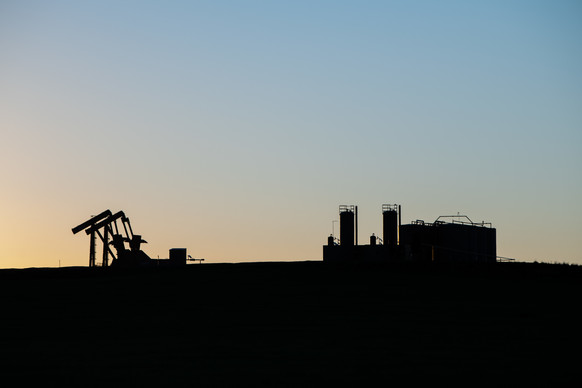Air Commission strengthens oil and gas leak repair requirements, but fails to ensure Colorado will meet its climate goals
Boulder County air studies and inspections data helped pave way for stricter industry rules
Denver, CO — Today the Air Quality Control Commission (AQCC) approved significant revisions to Colorado’s Leak Detection and Repair (LDAR) program, along with other pollution reduction measures for the oil and gas industry, but declined to approve stronger provisions proposed by state air quality experts or to strengthen provisions for pneumatic controllers which would have further reduced emissions.
“These new regulations will reduce greenhouse gas emissions around 50 percent by 2030, getting us closer to the HB21-1266 target of 60 percent by 2030,” said Boulder County Commissioner Claire Levy. "However, the AQCC chose to weaken the CDPHE proposal and did not adopt suggested requirements for pneumatic controllers. Increased direct regulation of this polluting industry is absolutely necessary to reduce methane emissions.”
The new regulations will move Colorado towards the targets set by a 2021 environmental justice law (HB21-1266), but the state will fall short of the goal of 60 percent reductions by 2030. Additional emissions reductions will still be needed to meet that goal. HB21-1266 also requires these regulations to provide extra protections for communities that are disproportionately impacted by oil and gas pollution, as well as by climate change. The rules adopted today do require more frequent inspections and repairs at sites near where people live, work and play. But some provisions do not extend to disproportionately impacted communities statewide — only in the ozone-impacted Front Range.
Since 2017, Boulder County has monitored methane and ozone precursor pollutants at the Boulder Reservoir. Data from the site and modeling studies show that air quality is heavily influenced by oil and gas development to the northeast. Along with Boulder’s air quality monitoring, data collection by Broomfield and Longmont also has similar patterns of influence from oil and gas, providing further proof that this industry contributes to high ozone levels and GHG emissions in our area.
Previously, many smaller wells were only inspected once in their lifetime under state law. Boulder County’s own inspection program data show that wells leak repeatedly and that frequent inspections are critical to reducing methane emissions. The new rules will ensure more frequent inspections and more prompt repairs to stop leaks at compressor stations and well production facilities. The AQCC voted against a proposal for additional reductions from pneumatic controllers, devices that open and close valves at production sites to regulate temperature and pressure, that would have required the installation of non-emitting pneumatic controllers at most sites.
Despite having some of the strictest methane reduction rules in the country, oil and gas in Colorado continues to emit large amounts of GHGs and volatile organic compounds (VOCs). VOCs contribute to the formation of ground-level ozone, which frequently causes unhealthy air across the Denver Metro region, including Boulder County. This summer, the Denver Metro North Front Range saw a record-breaking 41 straight days with ozone alerts; for a total of 73 alerts by mid-September. Currently, violation of ozone health standards in the Denver Metro North Front Range region is classified as “serious” by the Environmental Protection Agency, but is expected to be downgraded to “severe”.
“The air rules adopted today are an improvement but fall far short of what needs to be done,” said Boulder County Commissioner Matt Jones. “Oil and gas wells leak cancer causing chemicals like benzene, chemicals that create ozone that can damage our lungs, and methane, a greenhouse gas on steroids. There is no time to waste. We absolutely need the strongest possible action now.”
Breathing high levels of ground-level ozone can harm the respiratory system. Its negative health effects are particularly dangerous for sensitive populations, which include the elderly, children, those with lung and heart conditions, and disproportionately impacted communities that often already live closer to sources of air pollution, such as busy roadways or oil and gas operations. These dangerous air quality conditions are expected to worsen as temperatures rise with climate change.
In addition to health impacts, climate change is expected to increase the duration and intensity of wildfire seasons, further worsening air quality across Boulder County.
“Wildfires, flash flooding, and extreme heat – Boulder County is already experiencing impacts from the climate crisis," said Boulder County Commissioner Marta Loachamin. "The county has estimated that responding to only some of the potential effects of the climate crisis across Boulder County through 2050 will cost upwards of $157 million. We need improved controls on the oil and gas industry to help local governments that are struggling to deal with the ill effects of the climate crisis and poor air quality.”
Colorado still has work to do to meet its overall climate goals. In addition to more needed reductions from the oil and gas industry, transportation is another key sector for greenhouse gas emissions. Fortunately, just yesterday Colorado’s Transportation Commission voted to move the state forward on incorporating greenhouse gas accounting and emissions reductions in the transportation planning process.
For more information about Boulder County’s sustainability and climate action mission, please contact Christian Herrmann at cherrmann@bouldercounty.org.

Mission of the Office of Sustainability, Climate Action & Resilience
Our mission is to advance policies and programs that conserve resources, protect the environment, and safeguard our climate in order to build a sustainable, just, and resilient community.
|